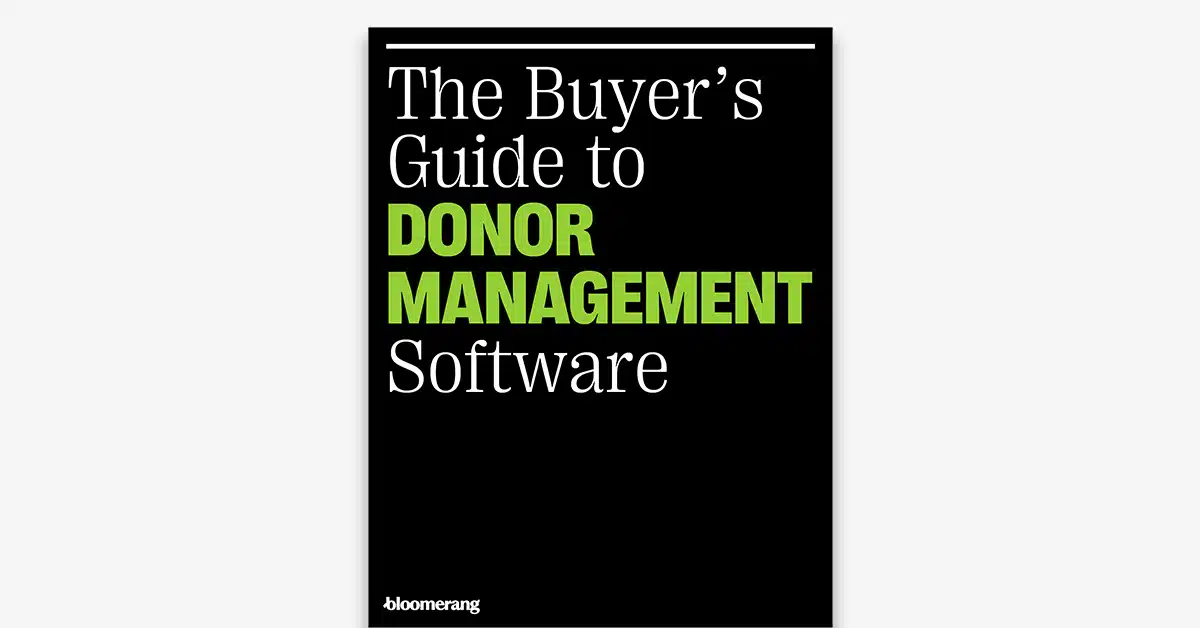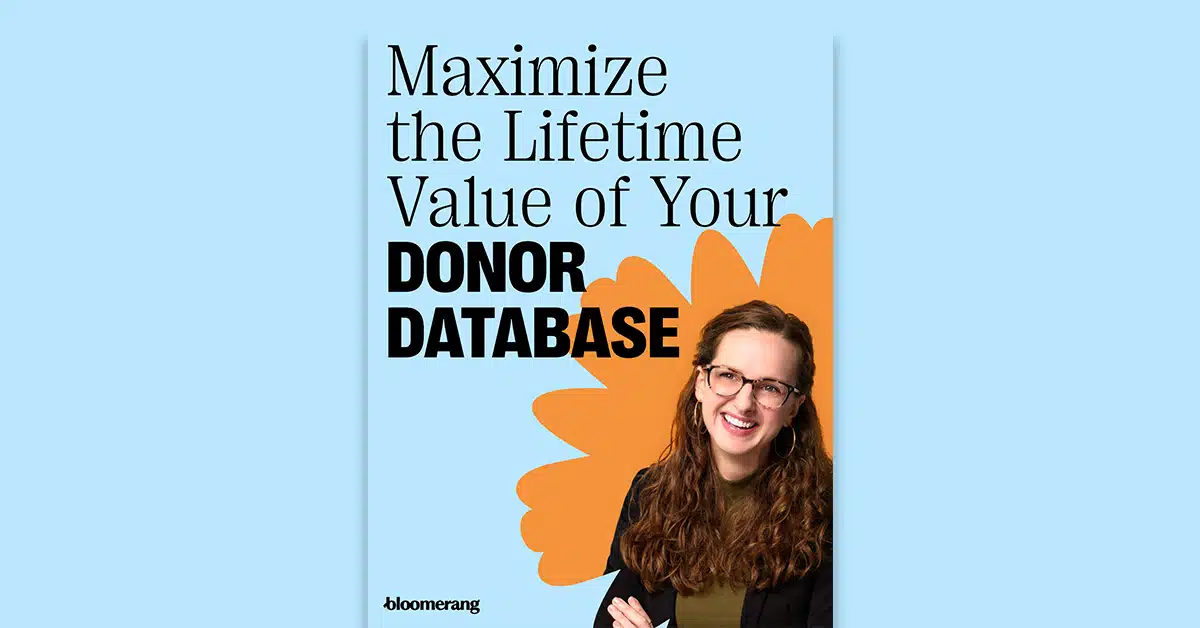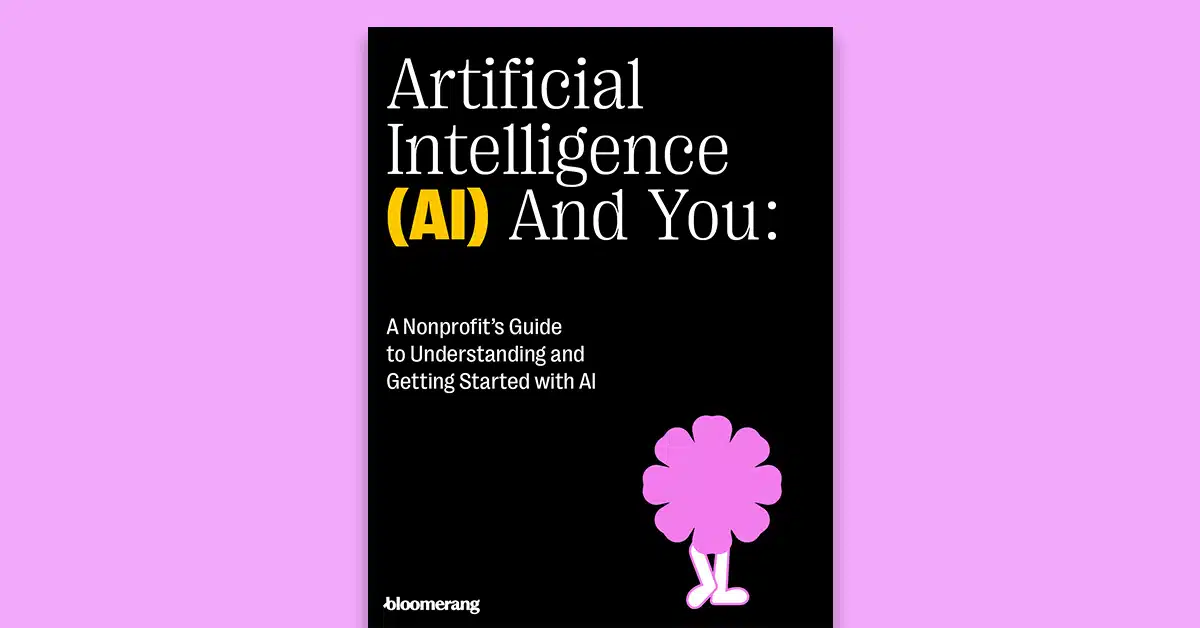As new tax reforms take shape, the rules around charitable giving—and what donors can deduct—are shifting in ways that could significantly impact how and when people choose to give.
For fundraisers, this isn’t just a matter of staying informed; it’s a moment to step forward as a trusted source of clarity.
Donors will have questions about how these changes affect their giving, and if they don’t get answers from you, they may hesitate—or turn elsewhere.
As a philanthropy facilitator, it’s your job to plan your communications now, so you can help donors make informed decisions and continue supporting the causes they care about in the most tax-beneficial way possible. Helping them with tax information may also enable them to make a larger gift.
What’s changing: a clear, fundraiser- and donor-friendly summary of the tax reform
Congress has made significant changes to the tax code under the One Big Beautiful Bill Act (OBBBA). While some elements of the 2017 Tax Cuts and Jobs Act (TCJA) have been extended, others have been modified. Today, here’s what nonprofit fundraisers need to understand:
1. New universal above-the-line deduction: $1,000 / $2,000
The final OBBBA law reinstates an above-the-line charitable deduction (Section 70424), allowing non-itemizing taxpayers to deduct up to $1,000 for individuals or $2,000 for married couples annually – starting in tax year 2026. This is a notable change that has no sunset provision (as was the case with the 2017 Act). And gifts to donor advised funds are excluded.
Food for thought: This makes deductibility relevant again for small and mid-level donors who take the standard deduction. Now, they can additionally deduct a portion of charitable giving. So, this is something you can once again promote as an extra incentive for giving.
2. Standard deduction still high
The legislation makes permanent the elevated standard deductions introduced by the 2017 TCJA, with inflation-related adjustments. The standard deduction for 2025 is increased to $15,750 for single filers and $31,500 for taxpayers who are married and filing jointly. The new law also expands the “bonus” deduction for taxpayers 65 and older through 2028 (though it phases out at higher incomes — $175,000 single/$250,000 couple).
Food for thought: With a hefty standard deduction still in place, including a bigger seniors’ bonus deduction, many donors won’t itemize — potentially reducing the value they place on deducting charitable gifts. In fact, after the 2017 TCJA went into effect, households itemizing deductions dropped to under 10%. So, all your messaging around “tax deductible as provided by law” or “last chance to grab year-end tax deduction” will pretty much fall on deaf ears (with the exception of the additional above-the-line deduction – relatively small pennies for major donors).
Note: For donors who have donor advised funds (DAFs), the high standard deduction may encourage “bunching” — a process whereby donors give several years’ worth of contributions to a DAF in one year in which they itemize. This gives them the flexibility to recommend grants from their DAF over several years, taking the standard deduction in those years.
3. 0.5% floor on itemized charitable deductions
Taxpayers who do itemize will only be able to deduct the portion of their charitable gifts in excess of 0.5% of their adjusted gross income (AGI). This giving floor is new, and means smaller itemized donations have less tax benefit. Here’s how it works:
- Itemizers can deduct charitable contributions only after they exceed 0.5% of their AGI.
- Example: A taxpayer with $400,000 AGI would need to give more than $2,000 in a tax year before any of that gift becomes deductible.
- If they donate $2,500, only the $500 above the floor counts toward their itemized deduction.
- If they give $1,800, none of it is deductible, because it didn’t exceed the $2,000 threshold.
Food for thought: This floor effectively raises the bar for itemizers, particularly affecting mid- to high-income donors and potentially influencing their giving strategies. The way you message to them matters! You may wish to encourage donors potentially affected by this provision to accelerate their giving in 2025 — before the new law goes into effect. This is another place strategic bunching strategies may serve the donor well. Also, try something like “Starting in 2026, itemizers can only deduct gifts that exceed 0.5% of their adjusted gross income—so not all donations will qualify. But even if you don’t itemize, you may now deduct up to $1,000 ($2,000 for couples) under a new permanent rule. Ask your advisor how these changes could affect the size or timing of your gift.”
4. New cap on the value of itemized deductions: 35%
This provision, a decrease from 37% (which is the highest federal tax bracket), impacts the donor’s tax savings. These two percentage points may not seem like a lot, and it applies to relatively few, but these few account for significant philanthropy. And note that the percentage point discrepancy will be higher in states with higher marginal rates. Recent research from Indiana University’s Lilly Family School of Philanthropy, commissioned by the Independent Sector, reveals this cap will reduce charitable giving by $41-61 billion over the next decade.
Food for thought: Donors in higher tax brackets may be well-advised to maximize deductions in 2025, before the 2026 changes take effect. Example: Let’s say a donor gives $300,000 and is in a 39.6% tax bracket. Under old rules, their donation might save $118,800 in taxes ($300K × 39.6%). Under the new rule, the maximum savings is $105,000 ($300K × 35%). That’s a $13,800 difference in tax benefit — not because they can’t deduct the gift, but because the value of that deduction is now capped.
Also of note: Donors must be mindful of adjusted gross income (AGI) rules, as any unused deduction amount rolled over to 2026 is subject to the 35% cap.
5. State and local tax (SALT) deduction cap increases: $40,000
For those with AGI under $500,000, the deduction cap for local taxes increases from $10,000 to $40,000 from 2025 through 2029. This could push more donors back to itemizing because when they add SALT to their charitable and any other deductions, their total may easily exceed the standard deduction.
Food for thought: This may potentially increase major gifts in high-taxed states (e.g., California; New York; New Jersey), especially from upper middle-income earners. This creates an incentive for donors to “bunch” several years’ worth of charitable giving into the 2025-2029 period to maximize their itemized deductions before the window closes and reverts to $10,000 again in 2030.
Summary
As sweeping tax reforms take shape, charitable giving rules are shifting in ways that could meaningfully influence donor behavior.
| Change | What It Means for Donors |
|---|---|
| Universal Deduction Returns | Non-itemizers can deduct up to $1,000 (single) or $2,000 (joint) for charitable gifts — even with the standard deduction. |
| Standard Deduction Stays High | Most taxpayers will still not itemize, but the new universal deduction offers some tax benefit for giving. |
| 0.5% AGI Floor for Itemizers | If you itemize, only the portion of your charitable giving above 0.5% of your income counts as deductible. |
| 35% Cap on Deduction Value | Even high-income donors can only receive up to 35¢ in tax savings per $1 donated, no matter their tax bracket. |
| SALT Deduction | Donors in high-tax states may easily exceed the standard deduction. |
For fundraisers, these changes underscore the need to step up as trusted advisors. Donors will look to nonprofits for clear explanations and smart giving strategies — like bunching gifts, using donor-advised funds effectively, or timing contributions to maximize tax benefits. Helping donors navigate this new terrain is about deepening trust, demonstrating leadership, and potentially inspiring greater generosity during a period of uncertainty. Part 2 of this two-part article will explore: (1) Why this matters to donors, (2) Why it should matter to you, (3) How to tailor your messaging by donor type, and (4) Next steps to meaningfully refocus your donor messaging.







Comments